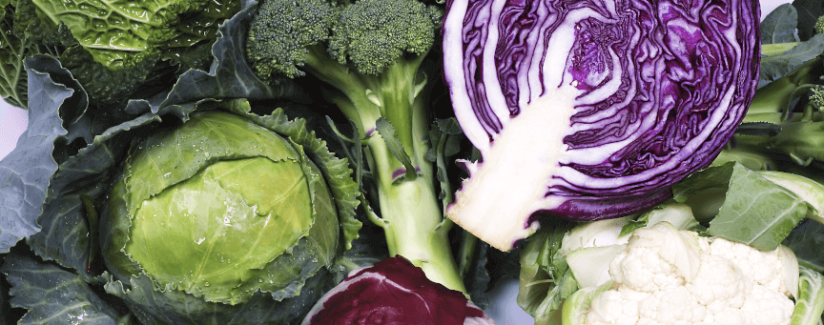
Food Facts: Broccoli’s Wild Roots
You won’t find broccoli growing in the wild. That’s because this vegetable was developed through centuries of careful plant breeding.
Broccoli’s family tree reveals something interesting. Some of our most popular vegetables — broccoli, cauliflower, cabbage, kale, kohlrabi and brussels sprouts — are all derived from wild mustard. They are in the cruciferous family, or commonly known as cole crops. The orginal wild mustard Brassica oleracea is native to the coastal Mediterranean region, Jeanne Osnas, a researcher at Purdue University, shared on her blog Botanist in the Kitchen.
Centuries ago, farmers identified characteristics in some wild mustard plants that they wanted to keep and planted seeds from those plants, gradually emphasizing certain traits. Plants with a large terminal bud were bred to produce cabbage. Plants with desireable leaves eventually became kale, as well as collard greens and Chinese broccoli. Brussels sprouts were developed from plants with large lateral buds and the stem was developed to become kohlrabi.
In the case of broccoli, as well as cauliflower, the flowers were the focus. Broccoli was cultivated in Italy in ancient Roman times. The crop became popular in Europe and was introduced in the United States in the 1920s, according to Penn State Extension. Broccoli did not become a favorite until after about 1980. It is now the 11th most-consumed fresh vegetable, according to USDA, and each American eats about 6.6 pounds per year. One reason we love it is because it is nutrient-dense. One cup of broccoli provides the full daily requirements for vitamins C and K. It is also a good source of fiber, vitamin A, folate and potassium.
Growers continue to experiment with the new combinations within the cruciferous family. Broccoflower is a green cauliflower. Broccolini is a hybrid between broccoli and Chinese broccoli. Broccoli rabe, also known as rapini, is more of a distant cousin and comes from the turnip family.
It is fascinating to realize how one type of wild mustard plant could become so many different types of vegetables, each one unique but similar to the others. Each vegetable in the cruciferous family has something to bring to the table.


























